The extraordinarily wide-spread 19th century plot device of a water nymph’s love for a young man of this world is familiar in literature, in painting and in music: it can be seen in Hoffmann, Pushkin, Dargomyzhsky, Andersen and many other authors. It is symbolic that this series and the entire tradition of Romantic musical fairytales should conclude with the opera by Antonín Dvořák, appearing as it did precisely at the turn of the 20th century: its premiere took place in early 1901.
A classic of Czech music, Dvořák left an expansive legacy of both symphony and opera music. of his ten operas, however, only Rusalka would go on to attain international popularity – today, not without some justification, it is considered one of the composer’s finest works.
The subject of the opera unfolds with a familiar and well-known plot that is close to us all (the kinship with Andersen’s fairytale is particularly notable): the desire to overcome the barrier between the world of natural spirits and the world of living men and women comes with a high price and inevitably leads to a tragic dénouement. the music for Rusalka marks one of the peaks of Dvořák’s lyricism, being rich in picturesque orchestral tableaux and memorable vocal melodies, among which, without any shadow of doubt, is the most famous highlight of the entire opera – Rusalka’s aria “The moon in the sky” from Act I.
The extraordinarily wide-spread 19th century plot device of a water nymph’s love for a young man of this world is familiar in literature, in painting and in music: it can be seen in Hoffmann, Pushkin, Dargomyzhsky, Andersen and many other authors. It is symbolic that this series and the entire tradition of Romantic musical fairytales should conclude with the opera by Antonín Dvořák, appearing as it did precisely at the turn of the 20th century: its premiere took place in early 1901.
A classic of Czech music, Dvořák left an expansive legacy of both symphony and opera music. of his ten operas, however, only Rusalka would go on to attain international popularity – today, not without some justification, it is considered one of the composer’s finest works.
The subject of the opera unfolds with a familiar and well-known plot that is close to us all (the kinship with Andersen’s fairytale is particularly notable): the desire to overcome the barrier between the world of natural spirits and the world of living men and women comes with a high price and inevitably leads to a tragic dénouement. the music for Rusalka marks one of the peaks of Dvořák’s lyricism, being rich in picturesque orchestral tableaux and memorable vocal melodies, among which, without any shadow of doubt, is the most famous highlight of the entire opera – Rusalka’s aria “The moon in the sky” from Act I.
The extraordinarily wide-spread 19th century plot device of a water nymph’s love for a young man of this world is familiar in literature, in painting and in music: it can be seen in Hoffmann, Pushkin, Dargomyzhsky, Andersen and many other authors. It is symbolic that this series and the entire tradition of Romantic musical fairytales should conclude with the opera by Antonín Dvořák, appearing as it did precisely at the turn of the 20th century: its premiere took place in early 1901.
A classic of Czech music, Dvořák left an expansive legacy of both symphony and opera music. of his ten operas, however, only Rusalka would go on to attain international popularity – today, not without some justification, it is considered one of the composer’s finest works.
The subject of the opera unfolds with a familiar and well-known plot that is close to us all (the kinship with Andersen’s fairytale is particularly notable): the desire to overcome the barrier between the world of natural spirits and the world of living men and women comes with a high price and inevitably leads to a tragic dénouement. the music for Rusalka marks one of the peaks of Dvořák’s lyricism, being rich in picturesque orchestral tableaux and memorable vocal melodies, among which, without any shadow of doubt, is the most famous highlight of the entire opera – Rusalka’s aria “The moon in the sky” from Act I.
The extraordinarily wide-spread 19th century plot device of a water nymph’s love for a young man of this world is familiar in literature, in painting and in music: it can be seen in Hoffmann, Pushkin, Dargomyzhsky, Andersen and many other authors. It is symbolic that this series and the entire tradition of Romantic musical fairytales should conclude with the opera by Antonín Dvořák, appearing as it did precisely at the turn of the 20th century: its premiere took place in early 1901.
A classic of Czech music, Dvořák left an expansive legacy of both symphony and opera music. of his ten operas, however, only Rusalka would go on to attain international popularity – today, not without some justification, it is considered one of the composer’s finest works.
The subject of the opera unfolds with a familiar and well-known plot that is close to us all (the kinship with Andersen’s fairytale is particularly notable): the desire to overcome the barrier between the world of natural spirits and the world of living men and women comes with a high price and inevitably leads to a tragic dénouement. the music for Rusalka marks one of the peaks of Dvořák’s lyricism, being rich in picturesque orchestral tableaux and memorable vocal melodies, among which, without any shadow of doubt, is the most famous highlight of the entire opera – Rusalka’s aria “The moon in the sky” from Act I.
The extraordinarily wide-spread 19th century plot device of a water nymph’s love for a young man of this world is familiar in literature, in painting and in music: it can be seen in Hoffmann, Pushkin, Dargomyzhsky, Andersen and many other authors. It is symbolic that this series and the entire tradition of Romantic musical fairytales should conclude with the opera by Antonín Dvořák, appearing as it did precisely at the turn of the 20th century: its premiere took place in early 1901.
A classic of Czech music, Dvořák left an expansive legacy of both symphony and opera music. of his ten operas, however, only Rusalka would go on to attain international popularity – today, not without some justification, it is considered one of the composer’s finest works.
The subject of the opera unfolds with a familiar and well-known plot that is close to us all (the kinship with Andersen’s fairytale is particularly notable): the desire to overcome the barrier between the world of natural spirits and the world of living men and women comes with a high price and inevitably leads to a tragic dénouement. the music for Rusalka marks one of the peaks of Dvořák’s lyricism, being rich in picturesque orchestral tableaux and memorable vocal melodies, among which, without any shadow of doubt, is the most famous highlight of the entire opera – Rusalka’s aria “The moon in the sky” from Act I.
The extraordinarily wide-spread 19th century plot device of a water nymph’s love for a young man of this world is familiar in literature, in painting and in music: it can be seen in Hoffmann, Pushkin, Dargomyzhsky, Andersen and many other authors. It is symbolic that this series and the entire tradition of Romantic musical fairytales should conclude with the opera by Antonín Dvořák, appearing as it did precisely at the turn of the 20th century: its premiere took place in early 1901.
A classic of Czech music, Dvořák left an expansive legacy of both symphony and opera music. of his ten operas, however, only Rusalka would go on to attain international popularity – today, not without some justification, it is considered one of the composer’s finest works.
The subject of the opera unfolds with a familiar and well-known plot that is close to us all (the kinship with Andersen’s fairytale is particularly notable): the desire to overcome the barrier between the world of natural spirits and the world of living men and women comes with a high price and inevitably leads to a tragic dénouement. the music for Rusalka marks one of the peaks of Dvořák’s lyricism, being rich in picturesque orchestral tableaux and memorable vocal melodies, among which, without any shadow of doubt, is the most famous highlight of the entire opera – Rusalka’s aria “The moon in the sky” from Act I.
The extraordinarily wide-spread 19th century plot device of a water nymph’s love for a young man of this world is familiar in literature, in painting and in music: it can be seen in Hoffmann, Pushkin, Dargomyzhsky, Andersen and many other authors. It is symbolic that this series and the entire tradition of Romantic musical fairytales should conclude with the opera by Antonín Dvořák, appearing as it did precisely at the turn of the 20th century: its premiere took place in early 1901.
A classic of Czech music, Dvořák left an expansive legacy of both symphony and opera music. of his ten operas, however, only Rusalka would go on to attain international popularity – today, not without some justification, it is considered one of the composer’s finest works.
The subject of the opera unfolds with a familiar and well-known plot that is close to us all (the kinship with Andersen’s fairytale is particularly notable): the desire to overcome the barrier between the world of natural spirits and the world of living men and women comes with a high price and inevitably leads to a tragic dénouement. the music for Rusalka marks one of the peaks of Dvořák’s lyricism, being rich in picturesque orchestral tableaux and memorable vocal melodies, among which, without any shadow of doubt, is the most famous highlight of the entire opera – Rusalka’s aria “The moon in the sky” from Act I.
The extraordinarily wide-spread 19th century plot device of a water nymph’s love for a young man of this world is familiar in literature, in painting and in music: it can be seen in Hoffmann, Pushkin, Dargomyzhsky, Andersen and many other authors. It is symbolic that this series and the entire tradition of Romantic musical fairytales should conclude with the opera by Antonín Dvořák, appearing as it did precisely at the turn of the 20th century: its premiere took place in early 1901.
A classic of Czech music, Dvořák left an expansive legacy of both symphony and opera music. of his ten operas, however, only Rusalka would go on to attain international popularity – today, not without some justification, it is considered one of the composer’s finest works.
The subject of the opera unfolds with a familiar and well-known plot that is close to us all (the kinship with Andersen’s fairytale is particularly notable): the desire to overcome the barrier between the world of natural spirits and the world of living men and women comes with a high price and inevitably leads to a tragic dénouement. the music for Rusalka marks one of the peaks of Dvořák’s lyricism, being rich in picturesque orchestral tableaux and memorable vocal melodies, among which, without any shadow of doubt, is the most famous highlight of the entire opera – Rusalka’s aria “The moon in the sky” from Act I.


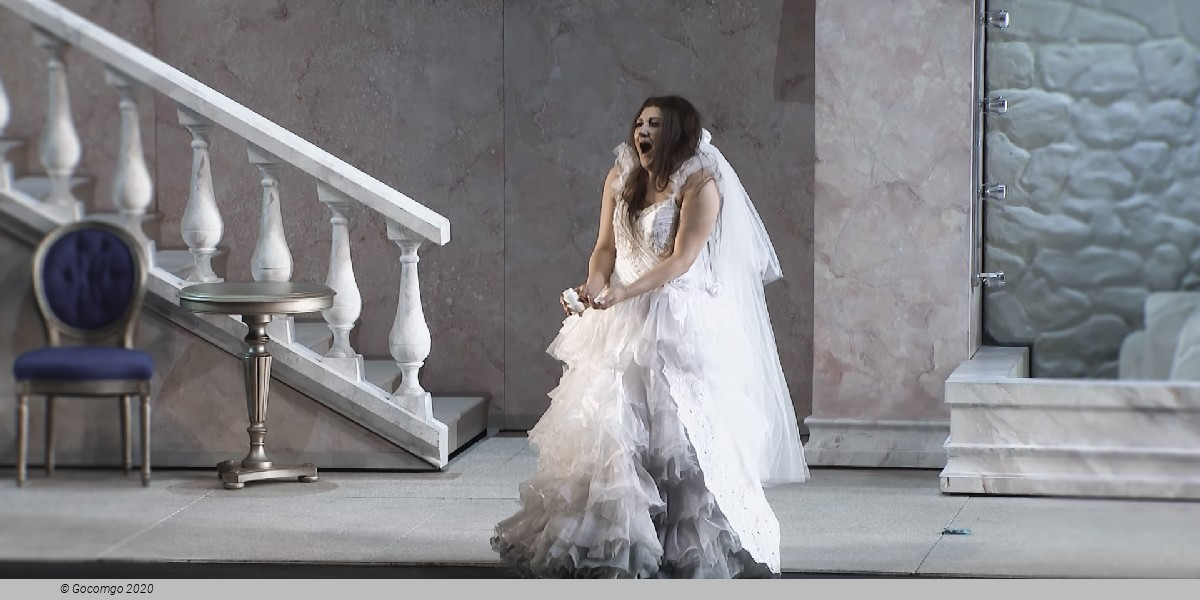

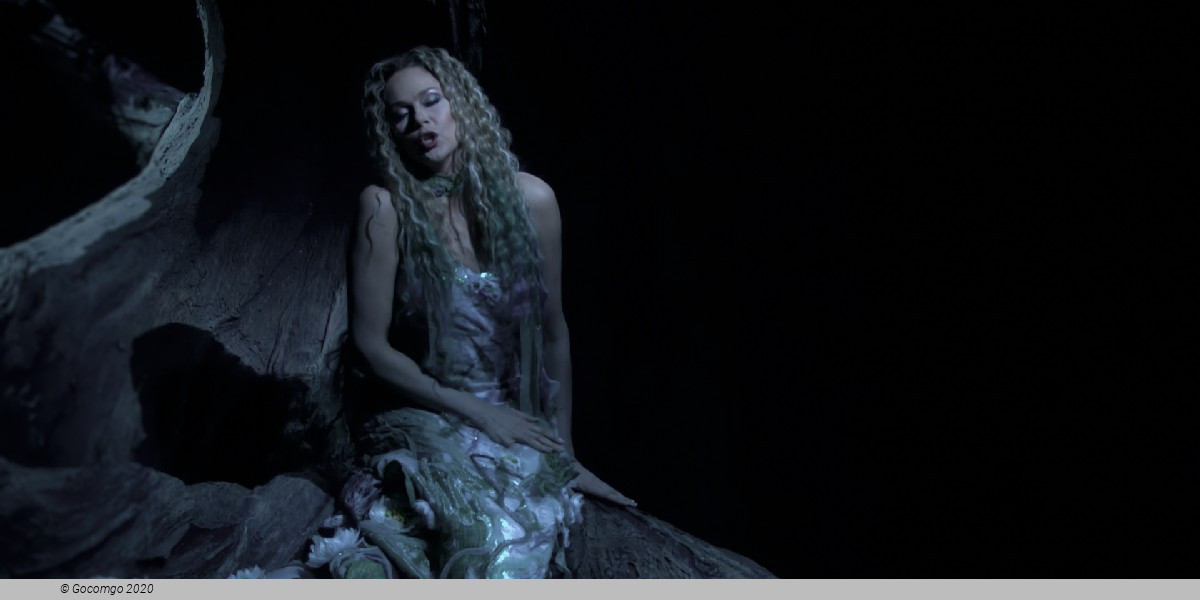
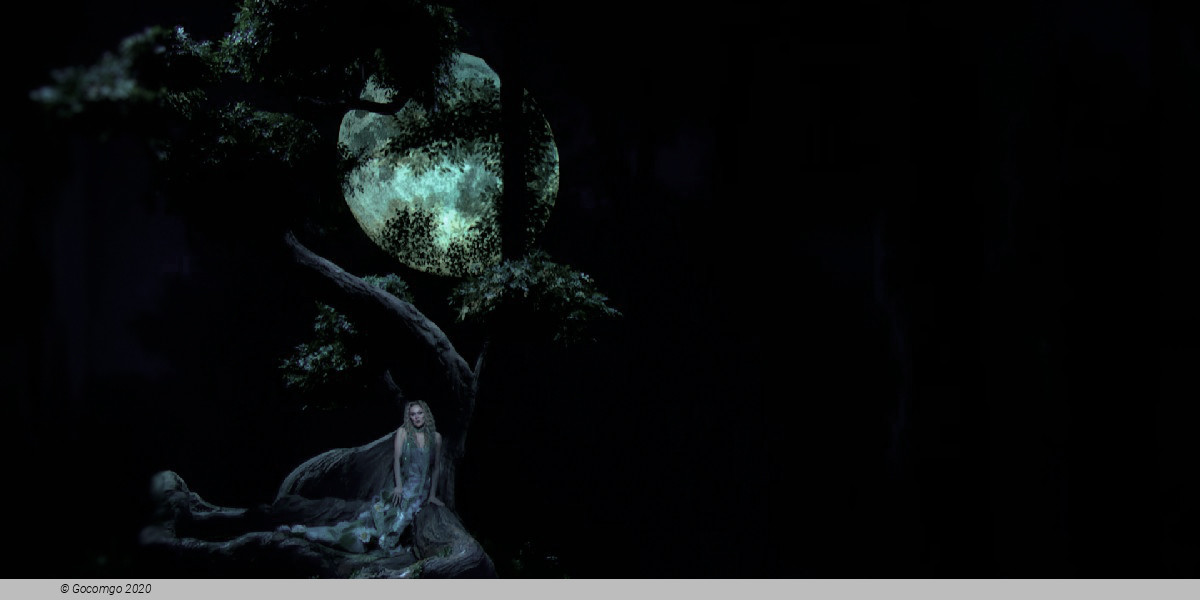
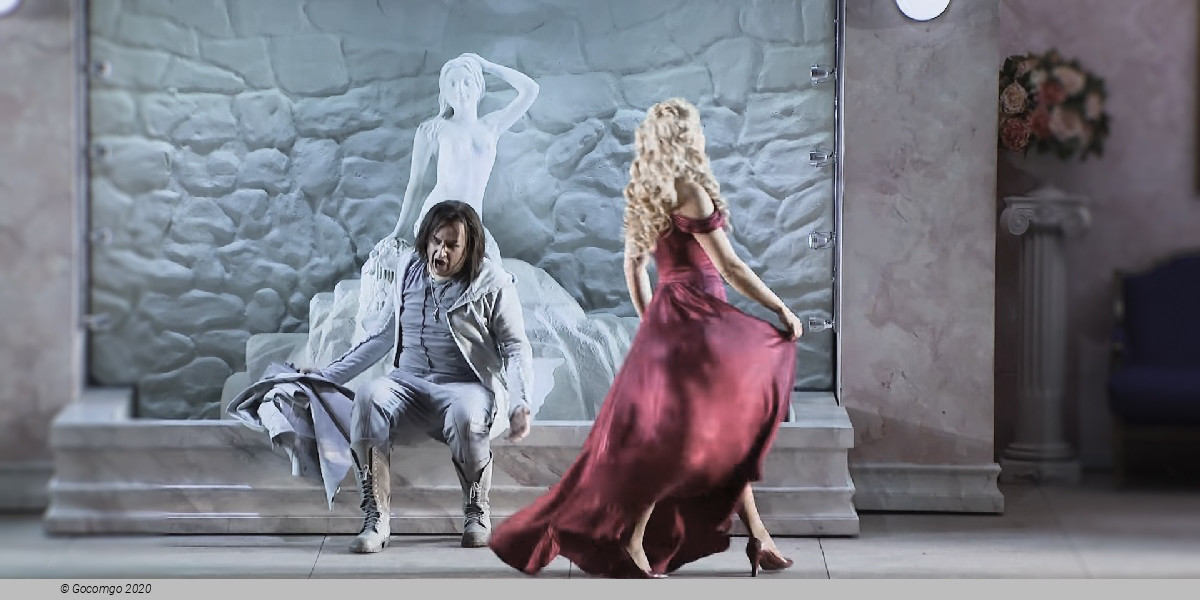
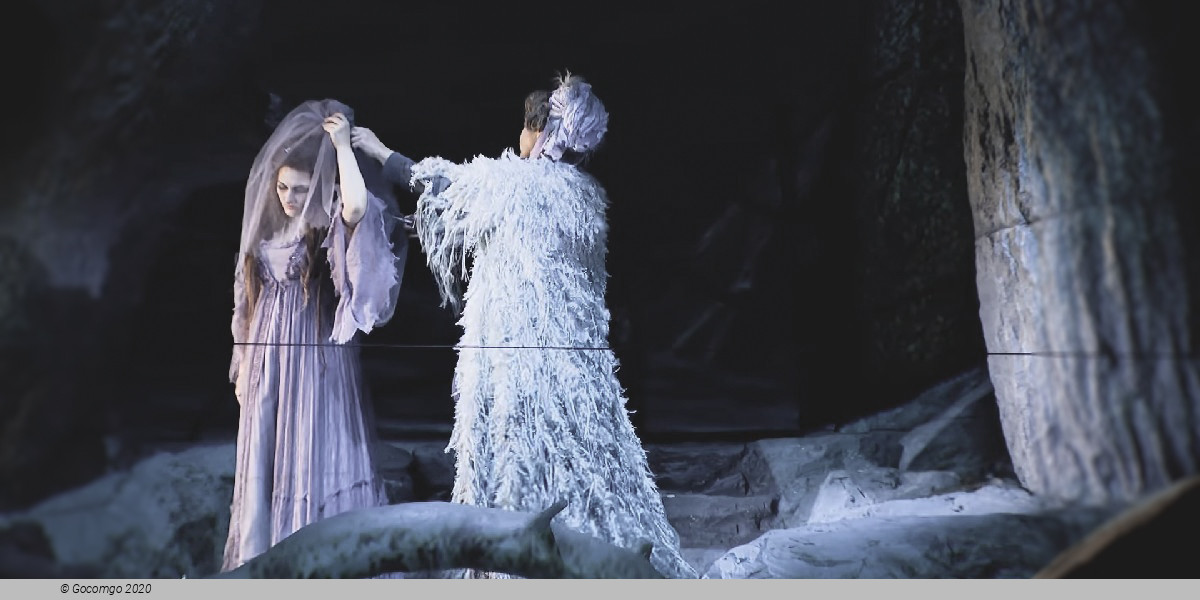
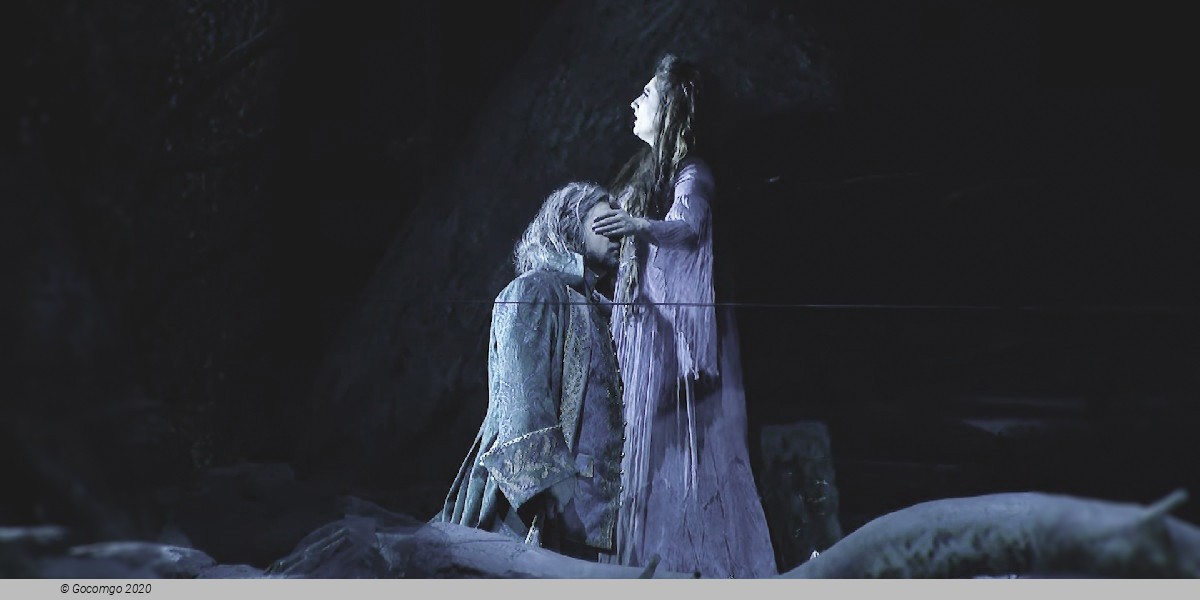
 1 Theatre Square
1 Theatre Square